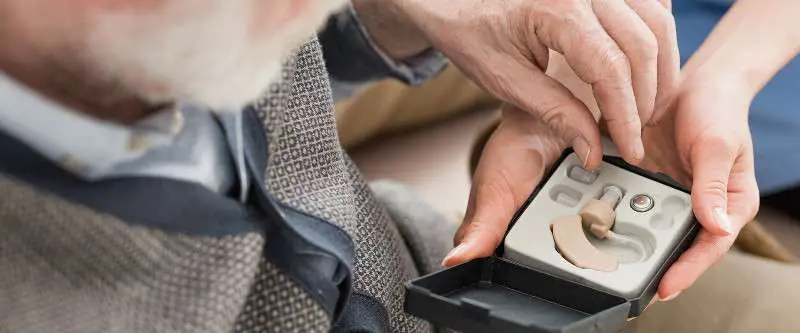Introduction
The complex symphony of sounds that constantly surrounds us is a testament to the power of hearing. From the whispering rustle of leaves to the thunderous applause of an enthusiastic audience, our ability to hear forms an integral part of our interaction with the world. Yet, the miracle of hearing is often taken for granted until it is compromised. One such impairment is conductive hearing loss, a condition that affects a significant portion of the adult population.
Conductive hearing loss occurs when the ability to conduct sound waves from the external and middle ear to the inner ear is hampered. The causes of this type of hearing loss are varied, ranging from blockages in the ear canal to malformations of the ear’s structure. While not a fatal condition, conductive hearing loss can significantly affect one’s quality of life, as sounds become muffled or faint.
Understanding conductive hearing loss isn’t complete without diving into its rich history. Over the years, the scientific community has gathered considerable knowledge and expertise about this condition, its diagnosis, and treatment. From the first crude devices designed to amplify sound to the sophisticated hearing aids of the present day, our journey into the historical context of conductive hearing loss promises to be a fascinating one.
This blog will delve into the intriguing history of conductive hearing loss, exploring its evolution in diagnosis, treatment, and societal perceptions. We’ll take a look at how scientific advances and societal changes have shaped our understanding and management of this condition over the years.
Prof-ReChargeable-Hearing-Aid
Experience Exceptional Sound Quality with Vivtone RIC02, a professional RIC hearing aid featuring a receiver in the canal design. Enjoy superior sound fidelity, reduced distortion, and minimal feedback. With a remarkable 51dB peak sound gain, it surpasses many other devices, catering to a wide range of hearing loss levels.
State-of-the-Art Technology awaits you with Vivtone RIC02. Designed with US-made components from renowned brands like Intricon and Knowles, this advanced device offers exceptional quality at a fraction of the cost. The built-in 30mAh steel-sealed lithium polymer battery charges rapidly in just 1.5 hours and provides an impressive battery life of over 20 hours.
Reliability and Water Resistance come hand in hand with the Vivtone RIC02. Secure your device with the included lanyard and clip, preventing accidental loss. With an IP65 rating, these hearing aids are resistant to water, sweat, and raindrops, assuring longevity and durability. Give the perfect gift to your seniors and loved ones, as this device combines functionality with an appealing appearance and packaging.
A Historical Overview of Conductive Hearing Loss
The history of conductive hearing loss is intertwined with the general history of audiology and otolaryngology. Even in ancient times, evidence suggests that societies were aware of hearing impairments and sought ways to address them. Early civilizations, like the Egyptians and Greeks, had an understanding of basic ear anatomy and recognized conditions that could lead to hearing loss.
Understanding the intricacies of conductive hearing loss, however, was a journey that spanned centuries. It was only during the 19th century that doctors began to recognize that different types of hearing loss existed. This was primarily due to advancements in anatomy and physiology that allowed for a better understanding of the ear’s structure and function.
In the 20th century, the concept of conductive hearing loss was solidified with the understanding that sound could be hampered at various points along the auditory pathway. During this time, conductive hearing loss was identified as a condition distinct from sensorineural hearing loss, where the issue lies in the nerves responsible for transmitting sound to the brain.
Evolution of Conductive Hearing Loss Treatment
The treatment of conductive hearing loss has seen remarkable evolution. In the early days, physicians utilized basic surgical techniques to clear obstructions in the ear. These were often unsophisticated procedures performed with rudimentary tools, primarily aimed at relieving discomfort and improving sound conduction.
The 19th century witnessed the advent of more complex surgical techniques aimed at repairing or replacing components of the middle ear, thus significantly improving hearing capabilities. The first mastoidectomy, a surgical procedure to remove an infected part of the bone behind the ear, was performed during this time. This procedure marked a turning point in the treatment of chronic middle ear diseases, which are a leading cause of conductive hearing loss.
Advancements in technology brought about the era of hearing aids, devices specifically designed to amplify sound. Initially, these devices were bulky, unwieldy, and only provided minimal hearing improvement. Over the years, however, hearing aids have become more refined and effective, culminating in the sophisticated digital devices we have today that can be tailored to the individual’s hearing needs.
The History of Conductive Hearing Loss Diagnosis
Just as the treatment of conductive hearing loss has evolved, so too has its diagnosis. Historically, doctors relied solely on patient history and basic physical examination to determine the presence and type of hearing loss. This often led to inaccurate diagnoses, as the complex nature of the auditory system was not fully understood.
The 19th century marked a major shift in the diagnosis of hearing loss. During this time, the tuning fork test was introduced by a German physician named Heinrich Adolf Rinne. The Rinne test, as it is known today, is a simple, quick, and efficient way to differentiate between conductive and sensorineural hearing loss.
However, the real revolution in hearing loss diagnosis came in the 20th century with the advent of audiology as a dedicated field of study. This allowed for the development of comprehensive diagnostic tests like audiometry, which provides a detailed analysis of a person’s hearing capabilities.
Technological advancements have further refined the diagnosis of conductive hearing loss. Modern tools like Tympanometry and CT scans can provide detailed images of the middle ear, identifying structural issues or obstructions that may be causing hearing loss. Furthermore, genetic testing has given us the ability to identify certain inherited forms of conductive hearing loss, allowing for early intervention and treatment.
Historical Perspectives on Conductive Hearing Loss
Throughout history, societal attitudes towards conductive hearing loss have largely been influenced by the level of understanding of the condition. In ancient and medieval times, people with hearing loss were often stigmatized and misunderstood, largely due to a lack of knowledge about the nature of the condition.
The advancement of medical and scientific understanding in the 19th and 20th centuries gradually changed these perceptions. As the causes and treatment options for conductive hearing loss became better understood, societal acceptance and support for individuals with the condition improved.
Educational and occupational opportunities for individuals with hearing loss expanded, and legislation was enacted to protect the rights of individuals with disabilities, including those with hearing loss. Today, people with conductive hearing loss are able to live fulfilling lives, thanks to improved diagnostic and treatment options, as well as increased societal understanding and support.
Deafness: A Journey of Challenges and Triumphs
From Ear Trumpets to Hearing Aids: A Historical Journey
The journey from ear trumpets to modern hearing aids is a fascinating tale of scientific innovation and perseverance. In the 18th and 19th centuries, hearing amplification devices were simple, rudimentary tools. Ear trumpets, for example, were large, funnel-like devices that collected sound waves and directed them into the ear. While these devices did provide some degree of amplification, they were far from discreet and only marginally effective.
The invention of the electrical hearing aid in the 20th century marked a significant turning point. These early electronic devices were large, often the size of a suitcase, and required a power source. However, they represented a massive improvement in sound amplification and quality compared to their predecessors.
The miniaturization of electronic components in the latter half of the 20th century led to the development of smaller, more practical hearing aids. Today’s hearing aids are sleek, highly efficient devices that can be customized to the individual’s specific hearing loss profile. They represent the culmination of centuries of scientific progress in understanding and treating conductive hearing loss.
11 ways to improve sleep better with tinnitus
Conclusion
The history of conductive hearing loss is a captivating chronicle of scientific progress, societal evolution, and human resilience. From the rudimentary understanding of ear anatomy in ancient times to the sophisticated diagnostic and treatment modalities of today, our journey through this history has been a testament to our relentless pursuit of knowledge and understanding.
The evolution of treatment from basic surgical procedures to advanced hearing aids encapsulates the drive to improve the quality of life for individuals with conductive hearing loss. Today, people with this condition have a range of treatment options and are able to live fulfilling, unrestricted lives.
The change in societal perspectives towards conductive hearing loss is equally inspiring. From stigma and misunderstanding to acceptance and support, society has come a long way in recognizing the challenges faced by individuals with hearing loss and providing them with the opportunities they deserve.
Our journey from ear trumpets to modern hearing aids is a testament to human ingenuity. Each step forward has represented a triumph of innovation, improving the lives of countless individuals along the way.
As we look forward to the future of conductive hearing loss, one thing is clear. With the pace of technological and medical advancements, the future for individuals with this condition is brighter than ever.

Harmonizing Life with Mixed Hearing Loss: A Global Perspective
Dive into the complexities of Mixed Hearing Loss with our comprehensive guide, exploring diagnosis, treatment options, and practical tips for daily management

Harmonizing Silence and Sound: Mastering Mixed Hearing Loss
Dive into the complexities of Mixed Hearing Loss with our comprehensive guide, exploring diagnosis, treatment options, and practical tips for daily management.






